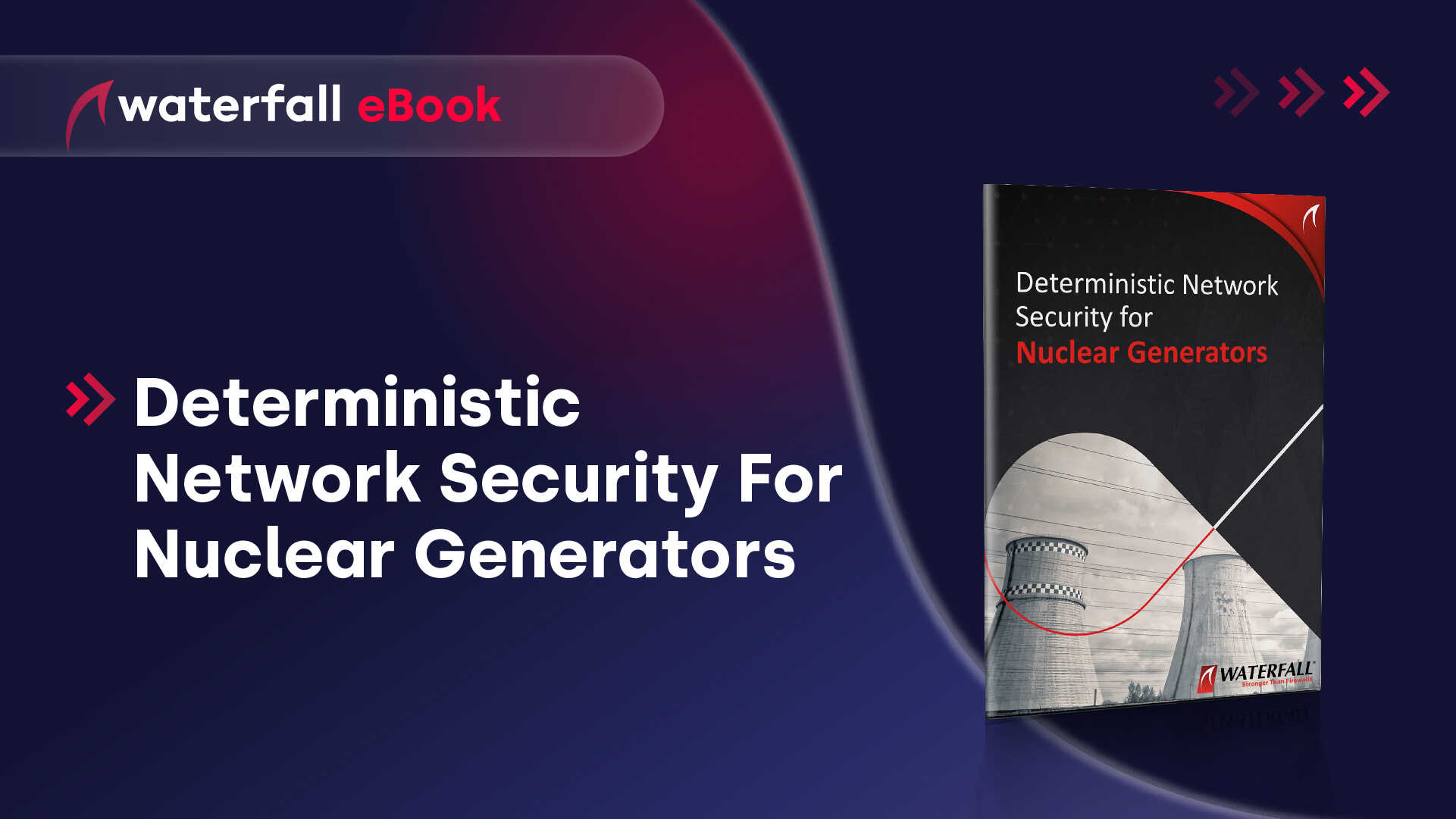Deterministic Network Security for Nuclear Generators eBook
Waterfall team

About 440 nuclear generators in 32 countries serve a vital role in the world economy – they supply 10% of the world’s electricity without generating greenhouse gasses. At every one of these sites, safety is the top priority. Reliability and efficiency are secondary priorities, because providing continuous, affordable electricity is also important to all generators. The problem is that computer automation and the network connectivity used by modern automation each open opportunities for cyber attacks. These attacks are serious threats to safe, reliable and efficient operations.
Four incidents shut down industrial operations in 2019. Nine did so in 2020. 22 shut down operations last year. Shutdowns due to cyber attacks are no longer a theoretical problem. Worse, the sophistication of these attacks continues to increase rapidly. In this report, we address the issue of cybersecurity for nuclear generators and dig into how two of the largest North American generators protect themselves from modern cyber threats.
In this eBook
![]() Digital control in modern generators
Digital control in modern generators
![]() Use case: North American nuclear generator
Use case: North American nuclear generator
![]() Simplifying regulatory compliance
Simplifying regulatory compliance
![]() Use case: Central security monitoring
Use case: Central security monitoring
Share
About the author

Andrew Ginter, VP Industrial Security at Waterfall Security Solutions
At Waterfall, Andrew leads a team of experts who work with the world’s most secure industrial sites. He is author of two books on industrial security, a co-author of the Industrial Internet Consortium’s Security Framework, and the co-host of the Industrial Security Podcast. Andrew spent 35 years designing SCADA system products for Hewlett Packard, IT/OT connectivity products for Agilent Technologies, and OT/ICS security products for Industrial Defender and Waterfall Security Solutions.